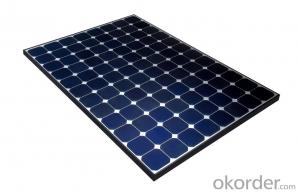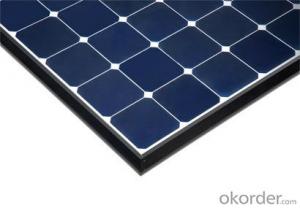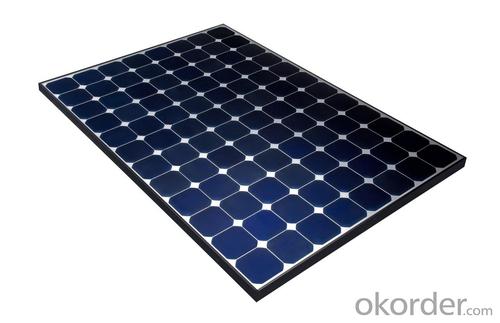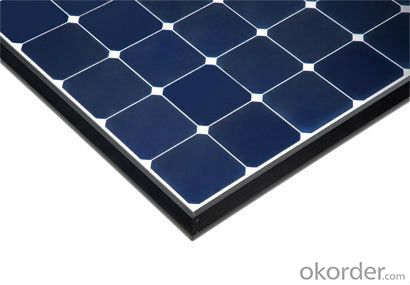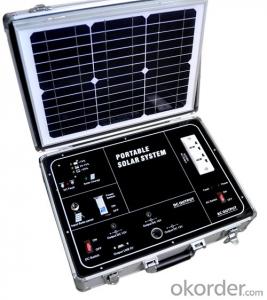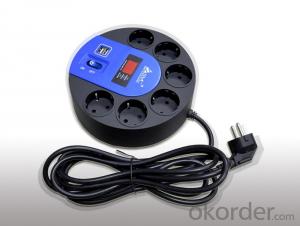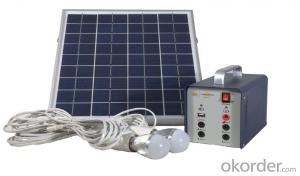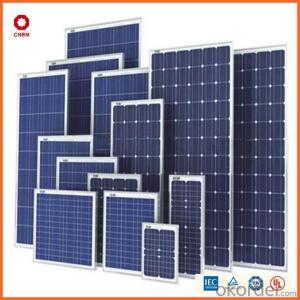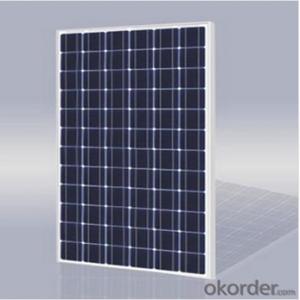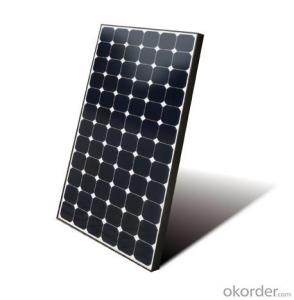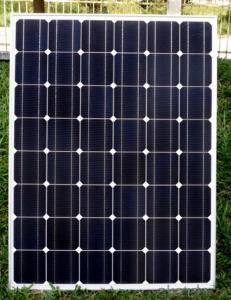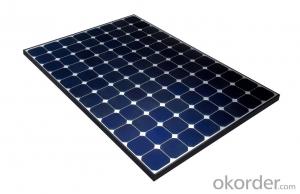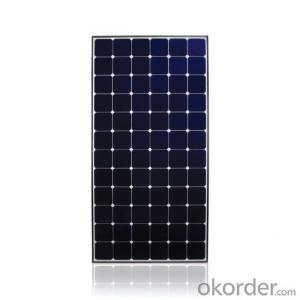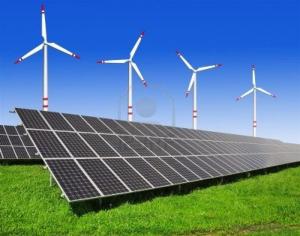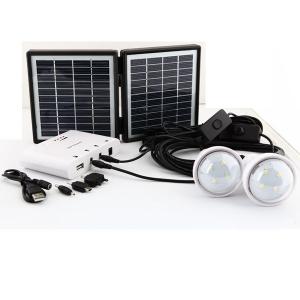500kw CNBM Industrial Solar Energy Systems Monocrystalline Silicon Panel for Home Use
- Loading Port:
- Shekou
- Payment Terms:
- TT OR LC
- Min Order Qty:
- 100 watt
- Supply Capability:
- 1000 watt/month
OKorder Service Pledge
OKorder Financial Service
You Might Also Like
Specification
500KW CNBM Monocrystalline Silicon Panel for Home Using
Production description
Solar power is the conversion of sunlight into electricity, either directly using photovoltaics (PV), or indirectly using concentrated solar power (CSP). Concentrated solar power systems use lenses or mirrors and tracking systems to focus a large area of sunlight into a small beam. Photovoltaics convert light into anelectric current using the photovoltaic effect.[1]
The International Energy Agency projected in 2014 that under its "high renewables" scenario, by 2050, solar photovoltaics and concentrated solar power would contribute about 16 and 11 percent, respectively, of theworldwide electricity consumption, and solar would be the world's largest source of electricity. Most solar installations would be in China and India.[2]
Solar energy is radiant light and heat from the Sun harnessed using a range of ever-evolving technologies such assolar heating, photovoltaics, solar thermal energy, solar architecture and artificial photosynthesis.
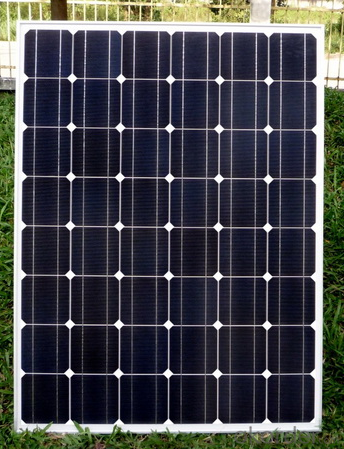
Feature
1.High conversion efficiencies resulting in superior power output performance.
2.Outstanding power output even in low light or high temperature conditions
3.Optimized design for ease of soldering and lamination
Physical characteristic
1. Rigorous quality control meets the highest international standards.
2. High-transmissivity low-iron tempered glass, strong aluminium frame.
3. Using UV-resistant silicon.
4. IS09001/14001/CE/TUV/UL
packaging
26pcs in one carton 6pallets in 20foot container 14pallets in 40 foot container.
- Q: Can a solar energy system be installed on a tile roof?
- Yes, a solar energy system can be installed on a tile roof. In fact, tile roofs are one of the most common types of roofs where solar panels can be installed. Special mounting brackets are used to secure the panels onto the tiles without damaging them. The process requires careful installation techniques to ensure the integrity of both the roof and the solar system.
- Q: Can solar energy systems be installed on roadways?
- Yes, solar energy systems can be installed on roadways. There are several innovative technologies being developed and tested which aim to integrate solar panels into roads and highways. These systems, often referred to as solar roadways, have the potential to generate clean energy while also providing other benefits such as lighting, heating, and even charging electric vehicles. However, the concept is still in its early stages and faces challenges in terms of cost-effectiveness, durability, and efficiency.
- Q: Do solar energy systems require batteries?
- Solar energy systems do not necessarily require batteries, as they can be directly connected to the electrical grid. However, batteries can be added to a solar energy system to store excess energy for later use, especially in off-grid or backup power situations.
- Q: What is the role of maximum power point tracking (MPPT) in a solar energy system?
- The role of maximum power point tracking (MPPT) in a solar energy system is to optimize the efficiency and output of the system by continuously tracking and adjusting the operating point of the solar panels to the maximum power point. This ensures that the panels are operating at their peak power production, maximizing the amount of energy captured from the sunlight and increasing the overall efficiency of the solar energy system.
- Q: Are there any ongoing monitoring requirements for solar energy systems?
- Solar energy systems have ongoing monitoring requirements to ensure efficient and effective operation. Monitoring is crucial for identifying and addressing any potential issues or malfunctions promptly. Ongoing monitoring involves tracking various aspects of the system's performance, such as energy production, system uptime, and deviations from expected outputs. This can be accomplished using different monitoring tools and technologies, including real-time monitoring software, data loggers, or remote monitoring systems. Furthermore, specific monitoring requirements may exist in certain jurisdictions or incentive programs to ensure compliance with regulations or eligibility criteria. Regular monitoring is essential for maximizing the benefits of solar energy systems and ensuring their long-term performance and durability.
- Q: How does shading affect the performance of solar energy systems?
- Shading has a significant impact on the performance of solar energy systems as it reduces the amount of sunlight reaching the solar panels, thereby reducing their efficiency in generating electricity. Even partial shading on a small portion of the panel can cause a significant drop in the system's output. Therefore, it is crucial to minimize shading, especially during peak sunlight hours, to maximize the performance and overall energy production of solar systems.
- Q: Are there any limitations to the lifespan of solar energy systems?
- Yes, there are limitations to the lifespan of solar energy systems. The most significant limitation is the degradation of the solar panels over time. Solar panels are made up of photovoltaic (PV) cells that convert sunlight into electricity. These cells degrade gradually, losing efficiency as they age. On average, solar panels experience a degradation rate of around 0.5-1% per year, which means that after 25-30 years, the panels might only produce around 75-80% of their original power output. Another limitation is the lifespan of other components in the solar energy system, such as inverters, batteries (if present), and wiring. Inverters, which convert the DC electricity generated by the solar panels into AC electricity for use in homes or businesses, typically have a lifespan of 10-15 years. Batteries, if used for energy storage, also have a limited lifespan, usually around 5-10 years. Wiring can deteriorate over time due to exposure to the elements, requiring maintenance or replacement. Furthermore, environmental factors can impact the lifespan of solar energy systems. Extreme weather conditions like hailstorms, hurricanes, or heavy snow can damage solar panels, reducing their efficiency or even rendering them inoperable. Additionally, excessive heat can accelerate the degradation of solar panels, shortening their lifespan. However, it is important to note that while solar energy systems have limitations, proper maintenance and regular inspections can help maximize their lifespan and performance. Many solar panels come with warranties that guarantee their performance for a certain number of years, often ranging from 20 to 25 years. Moreover, technological advancements and improvements in manufacturing processes are constantly being made, which may lead to longer-lasting and more efficient solar energy systems in the future.
- Q: Can solar energy systems be installed on roofs?
- Yes, solar energy systems can be installed on roofs. In fact, rooftops are one of the most common locations for installing solar panels. The main advantage of installing solar panels on roofs is that they utilize the existing space without requiring any additional land. Rooftop solar installations are also advantageous because they are usually unobstructed by shading from trees or buildings, resulting in optimal sun exposure for generating electricity. Additionally, rooftop installations are often cost-effective as they can reduce the need for long-distance transmission lines and can directly supply power to the building they are installed on. Overall, installing solar energy systems on roofs is a practical and efficient way to harness clean and renewable energy.
- Q: What is a photovoltaic solar energy system?
- A photovoltaic solar energy system is a renewable energy system that converts sunlight into electricity. It utilizes solar panels composed of multiple solar cells, which consist of semiconductors, usually silicon, that absorb photons from sunlight. When sunlight hits the solar panels, the photons transfer their energy to the electrons in the semiconductors, energizing them and generating an electric current. This current, initially in direct current (DC) form, is then converted into alternating current (AC) using an inverter, making it suitable for use in homes, businesses, or the electrical grid. Key components of a photovoltaic solar energy system include the solar panels, usually mounted on rooftops or open areas to maximize sunlight exposure. Various solar panel technologies exist, such as monocrystalline, polycrystalline, or thin-film, each with different efficiency levels and costs. To maximize efficiency, solar panels are often positioned at optimal angles and directions to capture as much sunlight as possible throughout the day. Additionally, inverters are employed to convert the generated DC electricity into AC electricity, which is the standard form used by most electrical appliances and devices. Photovoltaic solar energy systems offer numerous advantages. They contribute to environmental preservation by producing clean and renewable energy, reducing greenhouse gas emissions. They also have the potential to save costs by reducing or eliminating reliance on traditional energy sources. Furthermore, they require minimal maintenance and have a lifespan of around 25 to 30 years. In summary, a photovoltaic solar energy system effectively harnesses the sun's power to produce electricity, offering a sustainable and eco-friendly alternative to conventional energy sources.
- Q: How much do solar energy systems cost?
- The cost of solar energy systems can vary significantly depending on various factors such as the size of the system, location, quality of equipment, and installation costs. On average, residential solar energy systems can range from $10,000 to $30,000, but it's important to get a personalized quote from a reputable solar provider to get an accurate cost estimate for your specific needs.
Send your message to us
500kw CNBM Industrial Solar Energy Systems Monocrystalline Silicon Panel for Home Use
- Loading Port:
- Shekou
- Payment Terms:
- TT OR LC
- Min Order Qty:
- 100 watt
- Supply Capability:
- 1000 watt/month
OKorder Service Pledge
OKorder Financial Service
Similar products
Hot products
Hot Searches
Related keywords
